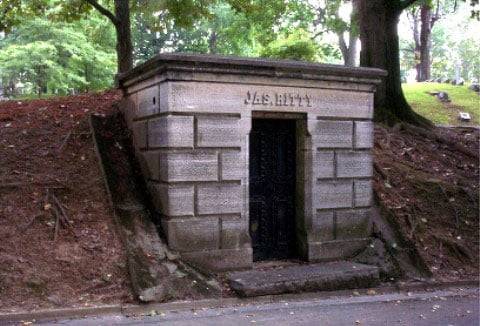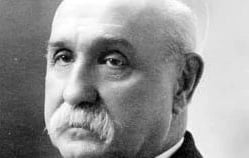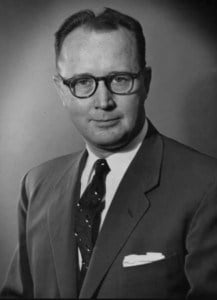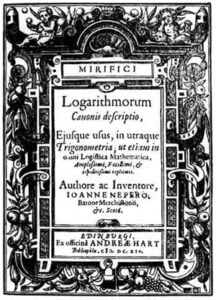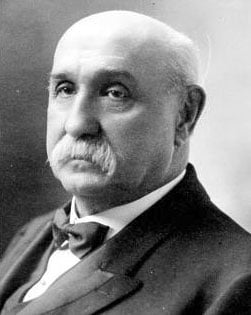
Few know of James Ritty, but he is a man who has influenced the life of virtually everyone who lives in the modern world. Ritty is the inventor of the cash register, and can thus be considered one of the founders of much of the modern commerce that all of us enjoy today.
Who was James Ritty?
James Ritty was born in Dayton, Ohio, on October 29, 1836. His father was a doctor and his mother, Mary, a housewife. Ritty remained in Ohio for all of his life.
Quick Facts
- Full Name
- James Ritty
- Death
- March 29, 1918
- Net Worth
- NA
- Children
- None
- Nationality
- American
- Place of Birth
- Dayton, Ohio
- Fields of Expertise
- [“Engineering”,”Business”]
- Institutions
- Precursor for the National Cash Register Company, later NCR
- Contributions
- Inventor of the cash register, business owner, saloon operator, American entrepreneur
Ritty was set to study medicine and enrolled in medical school, seeking the education to become a doctor and follow in the footsteps of his father. Ritty’s education was cut short by the Civil War, which ended changed plans. Dropping out of medical school, Ritty joined the Union army and served in the Fourth Ohio Volunteer Cavalry. He served in the army for three years before leaving in 1864.
Career
Saloon Owner
In 1871, Ritty opened a saloon in his hometown of Dayton, operating his first business on 10 S. Main Street. The saloon sold many types of alcohol, including whisky and wine, as well as cigars. Unfortunately for Ritty, he had to deal with a problem that many business owners have struggled with over the years: Employee theft. Employees would regularly steal from the “till” that contained the money, pocketing the cash and siphoning money away from Ritty. Like other business owners, he struggled with how to put a stop to this thievery. The issue was a major source of stress in Ritty’s life and hindered his business success.
According to published reports at the time, Ritty’s inability to track the finances of his saloon business caused him stress to no end. He struggled to track his business’ finances and keep a constant eye on what was happening at his cash register, but given his other responsibilities, this ultimately proved a major challenge to Ritty. Furthermore, like other saloons at the time, Ritty dealt with a constant turnover of barmen, making it difficult for him to find honest employees.
As a result, Ritty’s health suffered. Fatefully, he and his wife traveled to Europe in 1878, and it was a trip that would ultimately change Ritty’s life. In 1879, Ritty and his wife were on a ship that was crossing the Atlantic Ocean. Ritty was given the opportunity to visit the engine room, whereupon he came across a machine that tracked the rotations of the propeller. Inquiring further, Ritty found that the machine was engineered to record revolutions of the machine. This inspired Ritty to wonder what he could do to take the principles behind this machine and apply them to his business, potentially developing a machine that could record financial transactions.
What Did James Ritty Invent?
The Cash Register
Ritty was so inspired by the idea of a cash register that he and his wife ended their vacation early, and Ritty set to work right away on becoming an inventor. Both returned home to Dayton, whereupon Ritty spoke with his brother, John. Ritty had no formal education in business or engineering, but his brother was a skilled mechanic and possessed the mechanical skills that James was looking for. As such, John put his mechanical skills to work and began creating a device per James’ specifications.
John went to work right away and came up with the first version of the cash register in 1879. The first machine, as you would expect, looked nothing like the cash registers we use today. Instead, it had a large face with three arrows on it, bearing some relation in appearances to a clock. Clerks would use keys on the front of the device to record transactions and then insert the money into the device, which would keep a tally of how much money had actually been inputted.
The device was first marketed as “Ritty’s Incorruptible Cashier,” a direct reference to the fact that the register would make it much harder for employees to rob the businesses for whom they worked.
The Ritty Brothers would make changes to their device, replacing the original method by which transactions were recorded with a paper tape, then adding popping numbers to let cashiers and customers know how much money had been recorded. The device was patented, and the Ritty Brothers formally became inventors.
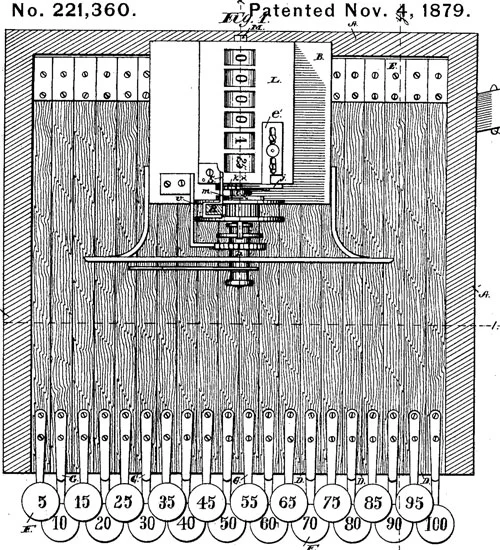
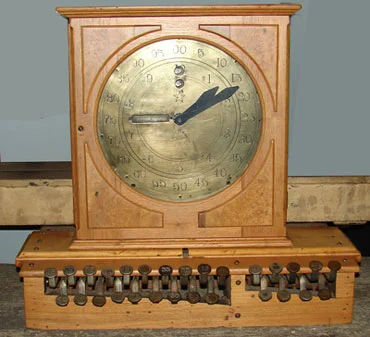
Originally, Ritty produced the devices on the second-floor apartment above his saloon. While his business never became a major success, it would be successful enough that he needed more space to produce his cash registers. Ritty used a building in 1879 that became known as the first cash register factory.
Unfortunately for the Ritty Brothers, their invention did not catch on and never became a major business success for either of them, and the various mechanical upgrades they made to the device did little to improve its commercial prospects. As a result, they sold the device in 1881, and the new owners sold the company to John Patterson. Patterson renamed the business the National Cash Register Company. He was actually one of the Ritty Brothers first customers, and clearly understood the potential of the cash register.
Patterson subsequently succeeded where the Ritty Brothers had failed, using advances in technology, mass production, and marketing to better sell the device in a way that James and John could not. As a result, the cash register became a massive commercial success.
The National Cash Register Company – first founded in 1884 – is still around today, and is known as NCR. It specializes in software, technological services, and business consulting. It got its start as a result of the business success of the Ritty family.
Return to Full Time Business Owner
In 1882, while still attempting to sell his cash registers, Ritty opened a second bar, known as The Pony House.
After selling his invention, Ritty returned to the ownership of his bars, his first career. Ritty would spend the rest of his business career operating his saloons. He would these businesses in 1895, noting that his health left him unable to adequately carry out his responsibilities as a bar owner. Ritty would ultimately stay retired until his death in 1918.
James Ritty: Net Worth, Marriage & Personal Life
Marriage
Ritty’s net worth when he died is unknown. However, although he did make a profit on the sale of his cash register, he ultimately did not reap any of the subsequent profits that others made off of it. However, it was reported that Ritty never held any business towards Patterson or others who turned his invention into a profit. Ritty remained close with Patterson and spoke at many NCR meetings.
Marriage
In 1862, while still serving in the military, Ritty married his wife, Mary. They remained married for 56 years, and Mary survived James after his passing. The couple never had any children and was not listed as particularly close with any extended family.
Other Family
James Ritty remained close with his brother, John, for his entire life. Indeed, John’s assistance was critical in the development of the cash register. John died in 1915, three years before James.
Death
Ritty died in 1918 after retiring in 1895 as a result of his poor health. His cause of death was listed as heart trouble. He is buried at Woodland Cemetery in his hometown of Dayton, Ohio. According to his obituary, Ritty was having heart trouble seven weeks before his deathbut had still been well enough to go out for automobile rides. He was 81 at the time of his passing. Ritty, his wife, and brother are entombed at Woodland Cemetery in their hometown of Dayton.
Awards & Achievements
Inventor of the cash register
There is no question that Ritty is best known for his invention of the cash register. Indeed, this is Ritty’s only accomplishment in life that has stood the test of time and remains historically known. Furthermore, it was Ritty’s innovations that led to the creation of the cash register, and while he and his brother were not able to ultimately financially capitalize on them, their invention set the stage for others to create a highly profitable business empire. As such, Ritty unquestionably left his mark on the financial sector, even if most do not actually know his name.
